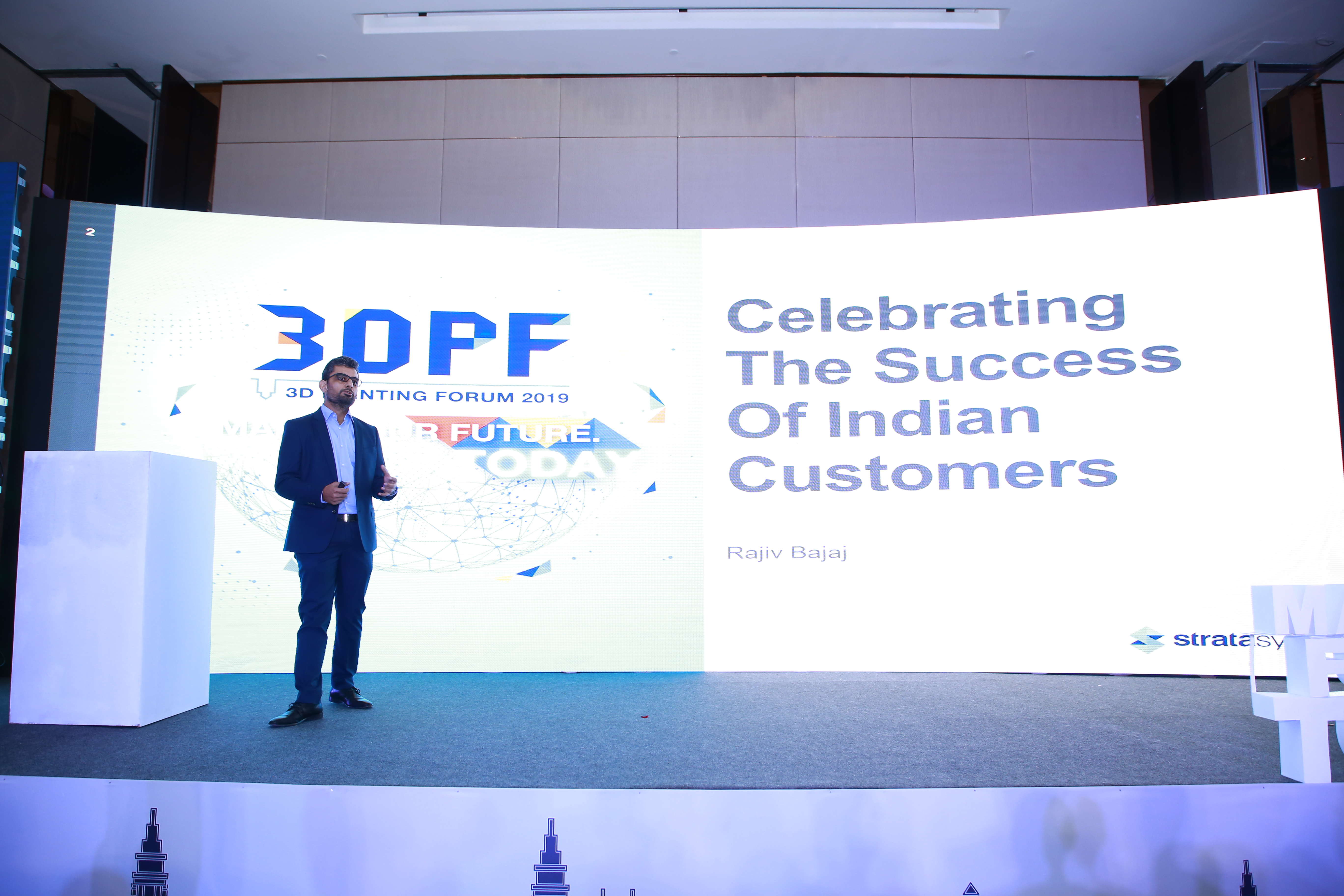3D Printing or Additive Manufacturing technology is making rapid strides in its applicability in the automotive industry in India and is going to revolutionize the way products are both designed and manufactured, the industry experts said at the third edition of ‘3D Printing User Forum’ organised by the leading 3D printing company, Stratasys.
Stratasys, which creates prototypes, manufacturing tools and production parts for leading automakers like Maruti Suzuki, Ashok Leyland, Honda, Mahindra and auto component maker Uno Minda, has witnessed wider adoption of 3D Printing technology in the auto sector, as compared to other sectors like Aerospace, Healthcare and Education.
Rajiv Bajaj, MD, Stratasys India and SEA, speaking on the side-lines of the event, revealed that the auto sector contributes almost 30% of the company’s total revenue in India. Commenting on the future plans, he said, “The company is aiming for high double-digit growth in India in the next five years. Stratasys has recently invested in two companies (Xaar and Inkbit) and plan to add 50 more customers across India in this year.”
He added, “We have been able to take 3D Printing technology to the masses. It is not only limited to Tier-I cities like Delhi and Mumbai but the demand has also been springing up from Tier-II and Tier-III cities like Trivandrum, Trichy, Sonipat, Bhubaneswar, Nasik, and Ambala to name a few.”

Speaking at the event, Saurabh Singh, DGM – Design Studio, Maruti Suzuki India, highlighted how 3D Printing technology has helped in enhancing the final quality of a product by providing high quality detailing, design personalization and seamless integration of the workflow. He also shared the design story of the company’s latest entry-level offering, S-Presso.
Discussing the economic implications of 3D Printing in the automotive sector, S A Sundaresan, Vice President – Electric Vehicles and e-Mobility Solutions, Ashok Leyland, said, “Additive manufacturing is going to play a key role in material engineering for advanced mobility. The company has been using the Stratasys additive manufacturing technology for designing blower cover development to meet CMVR (Central Motor Vehicle Rules) regulations on time.”
Sundaresan also elaborated on how Stratasys additive manufacturing technology has helped Ashok Leyland in saving 14,138 days of hour-utilization and Rs 74 lakh of manufacturing cost.
However, it is the Japanese automaker Honda which has pioneered the use of 3D printed jigs and fixtures in India. The company has a wide range of product prototypes which has been manufactured using additive manufacturing technology like car windshield mounting and headlights dimension verification jig, trunk lid mounting dimension jig and other parts, noted Bhushan Chanda, Manager – Business Excellence, Honda Cars India.
Honda Cars India is also planning to venture into prototyping of connected devices, striving to meet the changing trends in the auto sector with connected mobility and infotainment.
Sharing an interesting insight, Guy Yair, EVP – EMEA & APJ Stratasys, who is responsible for driving the company’s strategy, explained how Mini Cooper used the 3D Printing technology to reach its customers in China by allowing its customised fuel-cap design for its vehicles online which was later used in the final product.
The event was presided over by Padma Shri Awardee Ganpat I Patel, President and Patron-in-Chief, Ganpat University, who announced the setting up of a new ‘3D Printing Centre of Excellence’ at the university in partnership with Stratasys India to bridge the gap and skilling people with the nuances of additive manufacturing.
The AM Chronicle Editorial Team is a collective of passionate individuals committed to delivering insightful, accurate and engaging stories to additive manufacturing audiences worldwide.



